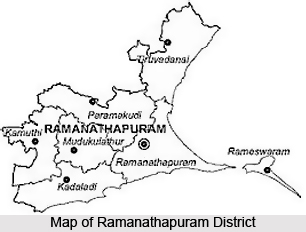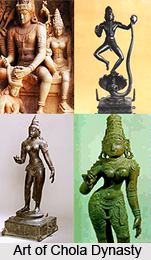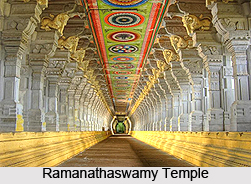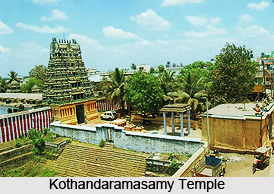 Ramanathapuram district is one of the districts in the south Indian state of Tamil Nadu. In the early fifteenth century the present district of Ramanathapuram consisting of the Tiruvadanai, Paramakudi, Kamuthi, Mudukulathur, Ramanathapuram and Rameswaram taluks was in the Pandiyan Kingdom. Ramanathapuram was trifurcated to form the Sivaganga, Virudhunagar and Ramanathapuram districts. This district of the Tamil Nadu state possesses a hot tropical climate with temperature ranging from 22.3 degree Celsius to 37.8 degree Celsius, while the relative humidity is high at seventy nine percent on an average and it ranges from eighty percent to ninety percent in coastal areas. There are also several educational institutions which impart education starting from the elementary level to the higher level. The total area covered by this district is 4175 square kilometers and the total population of the Ramanathapuram district is 1187604.
Ramanathapuram district is one of the districts in the south Indian state of Tamil Nadu. In the early fifteenth century the present district of Ramanathapuram consisting of the Tiruvadanai, Paramakudi, Kamuthi, Mudukulathur, Ramanathapuram and Rameswaram taluks was in the Pandiyan Kingdom. Ramanathapuram was trifurcated to form the Sivaganga, Virudhunagar and Ramanathapuram districts. This district of the Tamil Nadu state possesses a hot tropical climate with temperature ranging from 22.3 degree Celsius to 37.8 degree Celsius, while the relative humidity is high at seventy nine percent on an average and it ranges from eighty percent to ninety percent in coastal areas. There are also several educational institutions which impart education starting from the elementary level to the higher level. The total area covered by this district is 4175 square kilometers and the total population of the Ramanathapuram district is 1187604.
History of Ramanathapuram District
In the earlier parts of the fifteenth century, the present area of the Ramanathapuram district having the taluks Tiruvadanai, Paramakudi, Kamuthi, Mudukulathur, Ramanathapuram and Rameswaram were under the rule of the Pandyas. For a very small period, this area was also under the rule of the Chola Kings when Rajendra Chola brought it under his territory in A.D. 1063. In A.D. 1520, the Nayaks of Vijayanagar Empire took over this area under their control from the Pandiyan dynasty for about two centuries.
 Marava chieftains-Sethupathis who were Lords under the Kings of the Pandiyan dynasty reigned over this part. In the early eighteenth century, family disputes over succession led to the division of Ramanathapuram. With assistance from the King of Thanjavur in A.D. 1730, one of the chieftains deposed Sethupathy and became the Raja of Sivaganga. Acting upon the drawbacks of the Nayak rules, the local chieftains became independent. Chand Sahib captured Ramanathapuram and in 1741, the area came under the control of the Marathas and then under the Nizam in A.D. 1744. The rule of the Nawabs made displeasure in the mind of those chieftains and they declared the last Nayak as ruler of Pandiya Mandalam against the Nawab in A.D. 1752. By that time, throne of Carnatic had two rivals, Shanda Sahib and Mohamed Ali, and this district formed a part of Carnatic. The British and French supported Chanda Sahib and Mohamed Ali respectively which resulted in a series of conflicts in the southern part of the continent.
Marava chieftains-Sethupathis who were Lords under the Kings of the Pandiyan dynasty reigned over this part. In the early eighteenth century, family disputes over succession led to the division of Ramanathapuram. With assistance from the King of Thanjavur in A.D. 1730, one of the chieftains deposed Sethupathy and became the Raja of Sivaganga. Acting upon the drawbacks of the Nayak rules, the local chieftains became independent. Chand Sahib captured Ramanathapuram and in 1741, the area came under the control of the Marathas and then under the Nizam in A.D. 1744. The rule of the Nawabs made displeasure in the mind of those chieftains and they declared the last Nayak as ruler of Pandiya Mandalam against the Nawab in A.D. 1752. By that time, throne of Carnatic had two rivals, Shanda Sahib and Mohamed Ali, and this district formed a part of Carnatic. The British and French supported Chanda Sahib and Mohamed Ali respectively which resulted in a series of conflicts in the southern part of the continent.
In the year 1910, Ramanathapuram was formed by clubbing portions from the Madurai district and the Tirunelveli district. During the rule of the British this district was known as `Ramnad`, but later the name of Ramanathapuram was given to this district.
Administration of Ramanathapuram District
The district of Ramanathapuram in the Tamil Nadu state is having the collector as the administrative head of the district. There are two revenue divisions in this district known as Paramakudi and Ramanathapuram. Seven taluks of the Ramanathapuram district are Kadaladi, Ramanathapuram, Kamuthi, Tiruvadanai, Mudukulathur, Rameswaram and Paramakudi. There are thirty eight firkas, four hundred revenue villages and two thousand three hundred and sixty two hamlet villages in this district. In the Ramanathapuram district, there are eleven blocks called Tiruvadanai, Paramakkudi, R.S.Mangalam, Bogalur, Kamudi, Nainarkoil, Mudukulathur, Ramanathapuram, Kadaladi, Tiruppullani and Mandapam. Four hundred and twenty nine panchayats are there in this district. There are also two municipalities and nine towns in the district of Ramanathapuram.
Temples of Ramanathapuram District
The temples of the district of Ramanathapuram are famous centres of religious importance. The temples in this district are visited by a large number of devotees from different parts of Tamil Nadu and various other parts of Indian throughout the year.
 Some of the most prominent temples in this district are Ramanathaswamy temple, Badrakali Amman temple, Kothandaramasamy temple, etc. The Vishnu temple at Thiruppullani is dedicated to Lord Adi Jaganathaperumal and the temple is situated at a distance of sixty four kilometers from Rameswaram. Situated at a distance of seventy two kilometres from Rameswaram is Uthirakosamangai. At this place an ancient Shiva temple is located, where the presiding deity is carved in Emerald. The annual festival celebrated here is known as `Arudhra` in the month of December. This festival attracts a large number of devotees. Satchi Hanuman temple is another well-known religious place where Lord Hanuman was said to have delivered the good news of the well being of Sita to Lord Rama with an evidance choodamanai (jewel) of Sita. Another temple in this district called the Five-Faced Hanuman temple where Lord Hanuman is adorned with senthooram. The Patham Priya Koil is located in Thiruvetriyur in R.S. Mangalam block of the district. This temple is located over a large area and possesses a big tank. Another major temple of this district is located at a distance of eighty five kilometres from Rameswaram. It is the Veyulugantha Vinayagar Alayam and there is a belief that Lord Ram worshipped Lord Vinayagar in this temple on his journey to Sri Lanka.
Some of the most prominent temples in this district are Ramanathaswamy temple, Badrakali Amman temple, Kothandaramasamy temple, etc. The Vishnu temple at Thiruppullani is dedicated to Lord Adi Jaganathaperumal and the temple is situated at a distance of sixty four kilometers from Rameswaram. Situated at a distance of seventy two kilometres from Rameswaram is Uthirakosamangai. At this place an ancient Shiva temple is located, where the presiding deity is carved in Emerald. The annual festival celebrated here is known as `Arudhra` in the month of December. This festival attracts a large number of devotees. Satchi Hanuman temple is another well-known religious place where Lord Hanuman was said to have delivered the good news of the well being of Sita to Lord Rama with an evidance choodamanai (jewel) of Sita. Another temple in this district called the Five-Faced Hanuman temple where Lord Hanuman is adorned with senthooram. The Patham Priya Koil is located in Thiruvetriyur in R.S. Mangalam block of the district. This temple is located over a large area and possesses a big tank. Another major temple of this district is located at a distance of eighty five kilometres from Rameswaram. It is the Veyulugantha Vinayagar Alayam and there is a belief that Lord Ram worshipped Lord Vinayagar in this temple on his journey to Sri Lanka.
Apart from the temples there are various other places of religious importance in the district of Ramanathapuram in the Tamil Nadu state. One of the most notable centers of pilgrimage for the believers of Christianity all over the world is Oriyur. It is home to the martyrdom of St. John De Britto, a Portuguese Jesuit famously called `Arul Anandar`. Another place of religious importance in this district is Erwadi which holds the tomb of Sultan Ibrahim Syed Aulia, who came from Arabia through Cannanore, is about eight hundred years old. Pilgrims from countries like Malaysia, Sri Lanka and Singapore visit this tomb. The Santhanakoodu festival is celebrated in February-March at Erwadi attracts thousands of pilgrims every year.

Tourism in Ramanathapuram District
The major tourist attraction in the district of Ramanathapuram in Tamil Nadu is the Kurusadai Islands. Kurusadai Islands is located to the west of the Pamban Bridge between the mainland and the island. It is a marine biosphere, and it is considered to be a paradise for the marine biologists and nature lovers. Marine wealth is abounding at this place which attracts a large number of researchers and scholars to this Island. The Kurusadai Island is almost four kilometres from Mandapam. Away from the Kurusadai Island, one could also see a lot of coral-reef, fish, dolphins, sea-cows, etc.



















